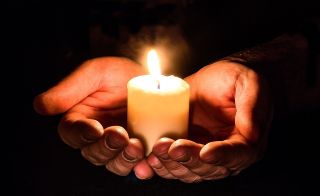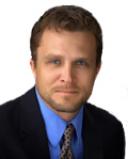Pornography
Homophobia and Religiosity Drive Struggles with Porn
Self-identified porn "addiction" is predicted by religious belief.
Posted July 13, 2023 Reviewed by Ray Parker
Key points
- LGBTQ+ individuals are at risk of being misdiagnosed by sex "addiction" treatment models.
- Research finds that individuals with higher religiosity and homophobia are more likely to struggle with porn.
- LGBTQ+ males and females who are more religious are at higher risk of viewing their porn use as addictive.

The concept of sex addiction, which not a recignized mental-health condition, has a long, negative history when it comes to issues related to non-heterosexual identities and behaviors. Over the past few decades, study after study has found that gay and bisexual men are at the greatest risk of being labeled as sex addicts. Sadly, many therapists who offer "conversion therapy" and attempt to change individuals' sexual orientation, use debunked models based on sex-addiction "treatment," a practice that sadly persists, according to a Reason article.
LGBTQ+ and Pornography
Non-heterosexual people tend to watch more pornography than heterosexuals, for a variety of reasons. First, for many, pornography is a safe, private outlet when they do not have to be “out” about their sexual orientation. Secondly, LGBTQ+ persons appear more likely to use watching porn to cope with negative emotions. Finally, pornography is one of the places where non-heterosexuals can find depictions of sex and intimacy that are consistent with their orientation as they are not widely present in mainstream media.
While the concept of sex addiction was initially introduced to describe and diagnose sexual behaviors such as infidelity or high levels of sex frequency, modern research indicates that self-perceived problematic pornography use is now the primary complaint of 70 to 80 percent of those who self-identify as addicted to sex.
Moral Incongruence Model
Since 2015, expanding research on the Moral Incongruence Model has demonstrated that self-identified addiction to pornography is highly predicted by moral and religious conflicts. Further, these internal conflicts of shame over one’s sexual desires not only predict self-identification as addicted but appear to greatly increase the degree of distress and struggles that people feel about themselves.
Hating yourself for wanting a kind of sexuality that you were taught makes you a "bad" person understandably increases negative emotions, such as depression, stress, and anxiety, but also increases the degree to which individuals feel that their sexual desires and behaviors are out of their control.
Researchers at Utah State University have examined the complex links between homophobic attitudes, religion, and self-perceived porn addiction. Utah is, coincidentally, the state in the United States with the highest number of pornography addiction treatment programs, and was the first state to declare pornography a public health crisis. Brian Droubay and Anarie White at Utah State conducted online research on self-perceived pornography problems in adults who watch porn; 56 percent were male, and 44 percent female, with 79 percent identifying as heterosexual vs. 17 percent bisexual and 4 percent gay or lesbian. The researchers excluded 301 respondents from the larger overall sample due to concerns about invalid responses, leaving a final total sample size of 540.
In this research, heterosexuals in general scored much lower on a measure of problematic pornography use, though frequency of pornography use was not a predictor of self-perceived pornography problems. However, not only were LGBTQ+ persons more likely to perceive of their use of pornography as an addiction, they were even more likely to view it as problematic when the individuals had high levels of internalized negative attitudes about homosexuality.
Where participants were LGBTQ+ and had internalized homophobic beliefs, they were significantly more likely to view their use of pornography as compulsive and problematic—a relationship unrelated to their frequency of porn viewing. Further, the more religious an LGBTQ+ person was, the more likely they were to have internalized homophobia. They were even more likely to view their pornography use as problematic. In other words, religion, homophobia, and LGBTQ+ identity interacted. As a person’s religiosity increased, the strength of the relationship between homophobic attitudes and self-perceived pornography addiction also increased.
In surprising results, the relationship between homophobic beliefs and self-perceived addiction to pornography was robust across both males and females. Past research has indicated that females are far less likely than males to view their pornography use as addictive. These data suggest that women with non-heterosexual desires may be as much at risk of struggles with pornography, when the women have internal shame and moral conflicts with their sexuality.

Treatment and Policy Implications
Droubay's and White’s research raises important issues for both policy and treatment/diagnosis around pornography. First, non-heterosexual individuals who seek treatment related to pornography use deserve affirmative, non-shaming treatment that explores whether their porn-related problems may be the result of moral conflict and internalized homophobia. Because these problems appear driven primarily by the interaction of sexual identity, religiosity, and homophobia, treatment should focus on these issues.
The frequency of pornography use was not predictive of self-perceived pornography problems in this population. This strongly suggests that pornography is not actually the problem, but instead, is merely a symbol for the sexual desires and arousal an individual has, but feels shame about. Rather than attempting to control or reduce pornography use, therapy should explore ways to confront internalized homophobia and assist the individual in navigating the complex issues of accepting one’s sexual identity amid conservative religious and social structures.
Second, Droubay and White raise the real concern that diagnoses related to the use of pornography may be inappropriately and unethically used to “treat” homosexuality and serve as covert forms of conversion therapy, which is known to harm patients. Policymakers, such as in those in state legislatures who are enacting regulations on pornography access, should consider whether their concerns about pornography reflect religious and moral attitudes, which contain embedded homophobia and harm LGBTQ+ individuals.
Unfortunately, many of the people who view pornography use as problematic come from conservative religious backgrounds, and themselves hold homophobic attitudes. Religious therapists, for example, are more likely to view homosexuality as unhealthy and more likely to diagnose and treat pornography use as an addiction.
As a result, the religious LGBTQ+ individuals most at risk for viewing their pornography use as addiction are likely to seek support within their own religious communities, where their internalized moral conflict may actually be worsened by treatment efforts that focus on the pornography use, rather than the underlying moral conflict spurred by homophobia.
Future treatment and diagnosis efforts to address pornography use must consider whether these problems are actually a form of a culture-bound syndrome, reflecting the conflict between sexual identity and conservative cultural beliefs.




